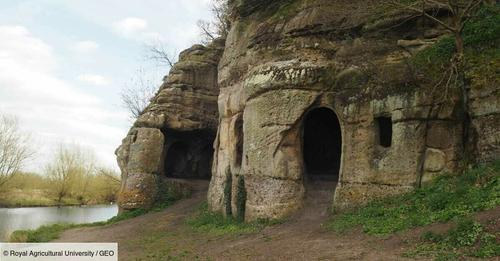England: a cave identified as the house of a king in exile 1200 years ago

Archaeologists have identified a cave in the county of Derbyshire as the home of an English king in the 9th century.
It is a great discovery made by English archaeologists from the Royal Agricultural University and Wessex Archaeology. While they thought they were dealing with a cave dating from the 18th century, they finally saw their copy again. This famous cave in question has just been identified as one of the oldest intact domestic interiors ever found in the UK . According to them, it was once the home of an exiled Anglo-Saxon king.

A 9th century cave, not the 18th century
The caves, cut into the rock of soft sandstone, have long been considered "follies" of the 18th century. But this new study, published in the Proceedings of the Speleological Society of the University of Bristol, claims that these caves are more likely to date from the early Middle Ages.
“Our results show that this strange little building carved into the rock of Derbyshire is more likely to date from the 9th century than from the 18th century, as everyone had originally thought, said in a press release Edmund Simons, principal investigator of the project and researcher at the RAU This makes it probably the oldest intact domestic interior in the UK - complete with doors, floor, roof, windows etc - and, furthermore, it may have been inhabited by a king who became a saint!With the help of detailed measurements, a survey by drone and a study of architectural details, it was possible to reconstruct the original plan of three rooms and an oratory or chapel oriented to the east, with three apses."

The home of an exiled king
Archaeologists explain that caves of this type are often associated with anonymous medieval hermits or anchorites. But in this case, a local legend links the site to Saint Hardulph. This man was previously King of Northumbria - he was called "King Eardwulf" from 796 to 806. After being deposed in 806, he went into exile, and died in 830, buried only 8 km from the cave.
Edmund Simons continues : "The architectural similarities to Saxon buildings, and the documented association with Hardulph/Eardwulf, provide compelling evidence that these caves were built or extended to house the king in exile. It was not uncommon for the Fallen or retired royalty took up a religious life during this period, achieving sainthood and, in some cases, canonization. Living in a cave as a hermit would have been one way to achieve this . "
The archaeologist clarifies that he was not a "ragged hermit eating nuts and fruits alone. In reality, he was someone who would have had disciples with him and would have been revered as a saint, probably as a saint during his lifetime. And if he no longer had his large village hall, this cave was the most beautiful effect" .
Source : websites

